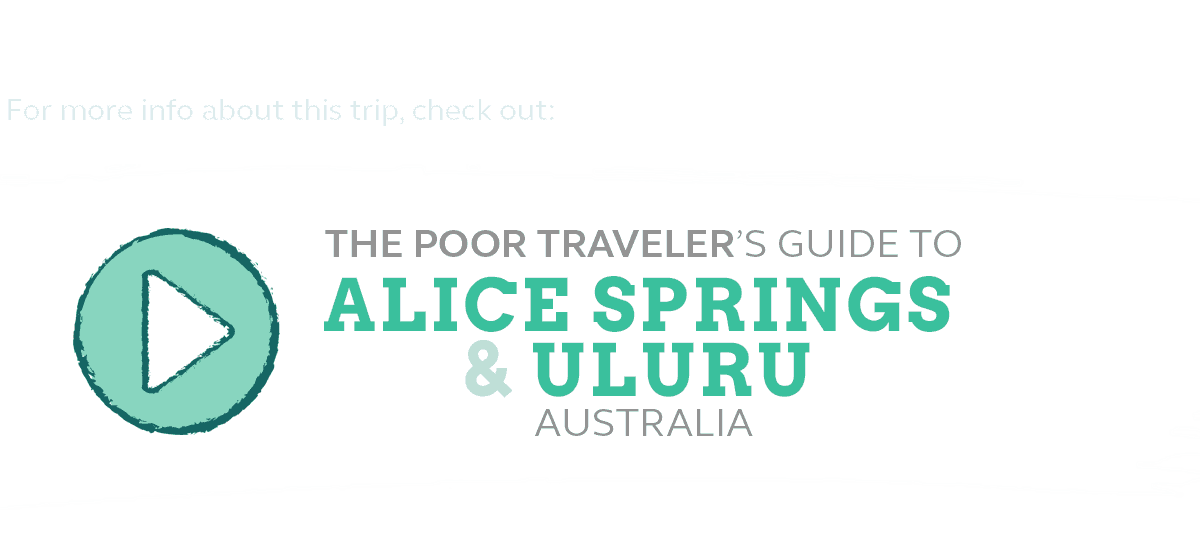
It was early morning, and the June wind carried with it a biting cold that I was not prepared for and the aroma of hot coffee from a dozen other tourists who stood next to me. We were waiting for our guide to teach us how to ride one of the camels that formed two quiet trains. Their humps painted a silhouette of a distant mountain range just before dawn.
When I think about Australian wildlife, I usually think about the many dangerous animals threatening my very existence.
Camels were not one of them.
Many times, it’s a saltwater crocodile chowing me down one limb at a time, an eastern brown snake sending me to tabloid headlines with one fatal bite, or a kangaroo disemboweling me with a sharp kick. But camels, no. Before this Outback adventure, camels won’t be the first animal to come to my mind. Scratch that, not even one of the first ten. Not because I didn’t think they were dangerous. It was mostly because up until I was up close and personal with one, I didn’t know there were camels in Australia. Shocking.
But there I was in the middle of the Outback, seeing a camel in the flesh and riding it; its wheat-colored humps between my legs. (Why does it sound so sleazy?) My camel’s name was Buddy. And like an ideal travel buddy, he was friendly, cooperative, and didn’t have any offensive odor. Buddy is just one of the nearly one million camels in the Outback. And this large and still growing population makes the camel a dangerous species in the wild.
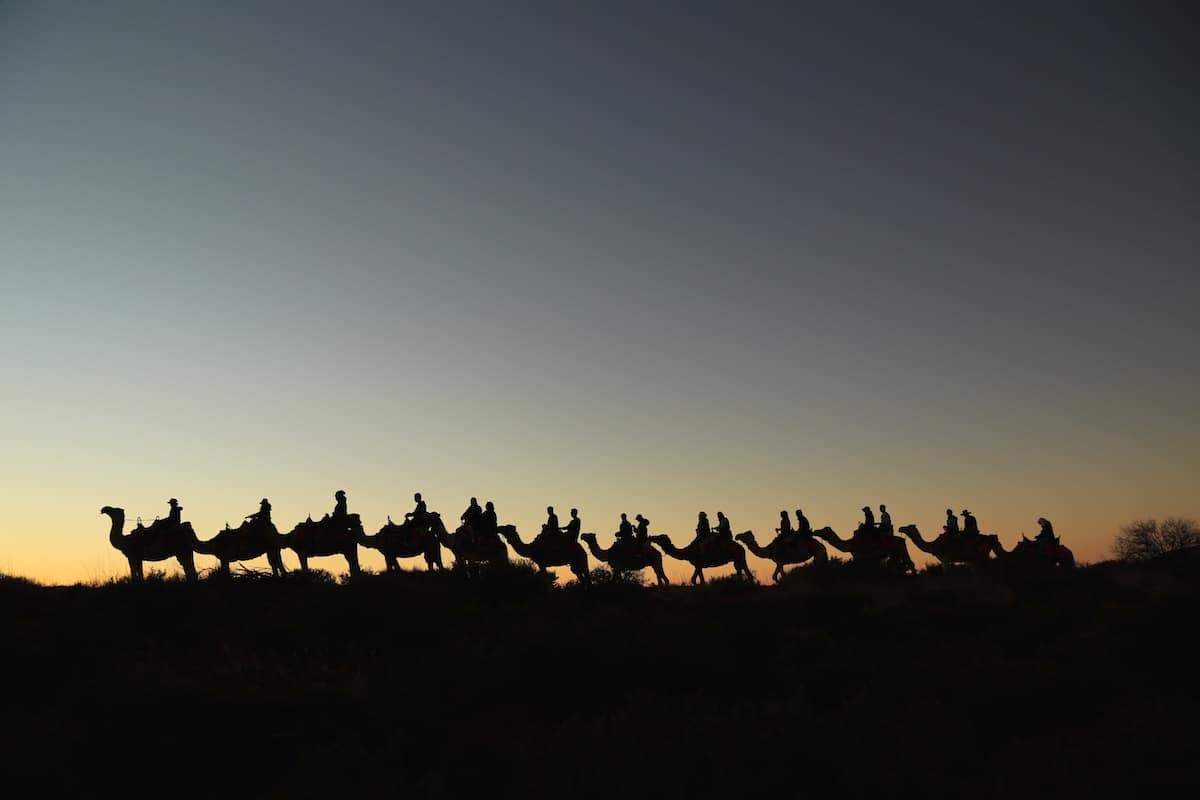
WHAT'S COVERED IN THIS GUIDE?
Uluru Camel Tours
Our tour started right outside the saddlery, where our guides assigned a camel and taught everyone the proper way of saddling up. It was quarter to seven in the morning, and while the cold and the dark fostered a rather sleepy atmosphere, I could feel the energy from everyone at the yard. The guide instructed the camels one at a time to bend down and allow passengers to climb onto it, and then made it get up on its feet again.
When the first light broke and painted the skies a soft golden glow, we were just about to make it past the race track, a permanent fixture in the farm. Many of the camels here compete in the annual race, with a few enjoying a little bit of fame. Lazy Daisy, the camel ahead of us, had his share of racing glory. The supple, red dunes made up much of the terrain, with parts covered with humble vegetation. A tree stuck out every few dozen meters or so, but much of the greens were woody shrubs.
As darkness thinned, it began to dawn on me that we were riding around the area between the world-famous Uluru and Kata Tjuta, two of the most highly-revered sites in the Aboriginal cultures.
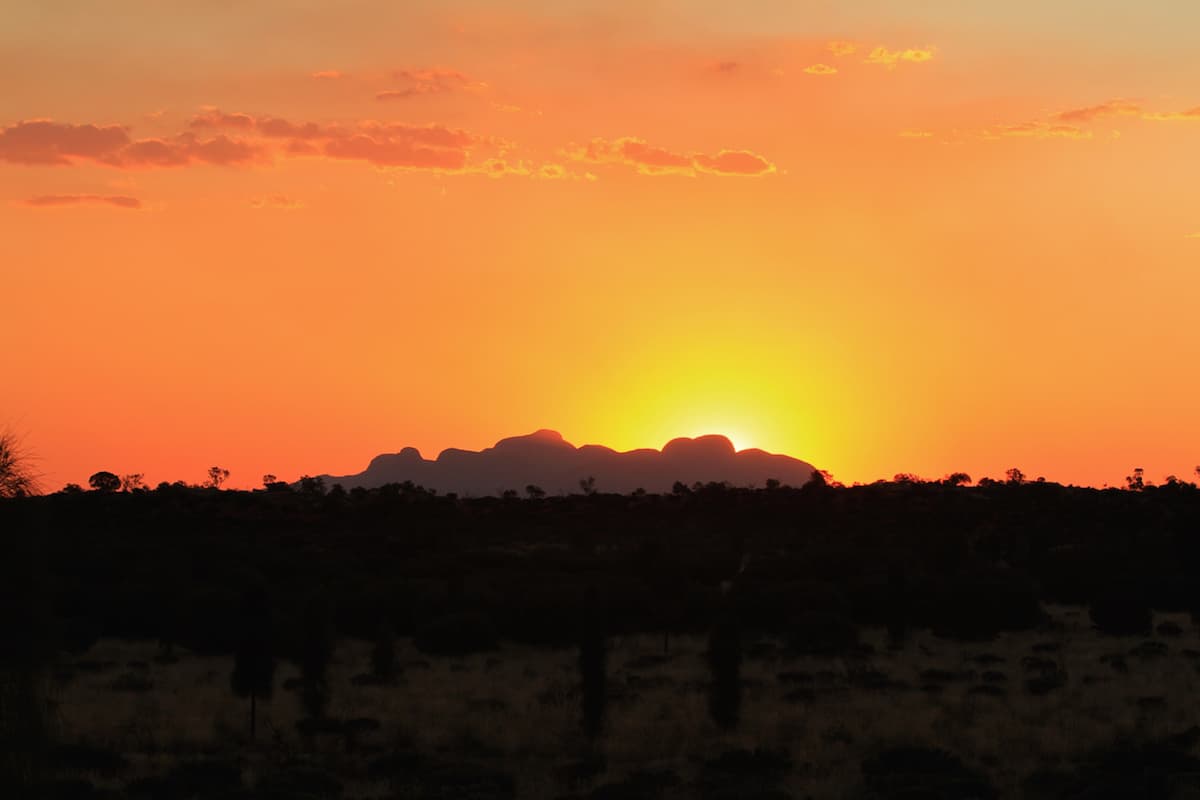
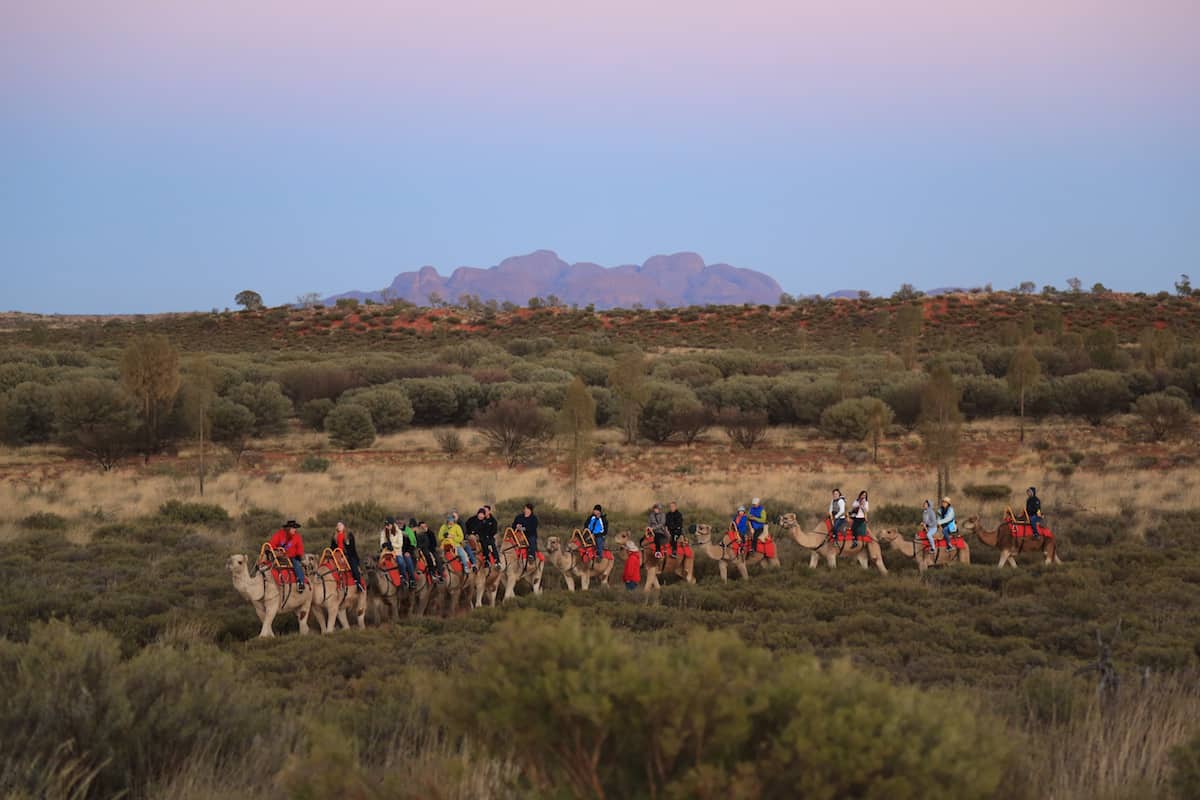
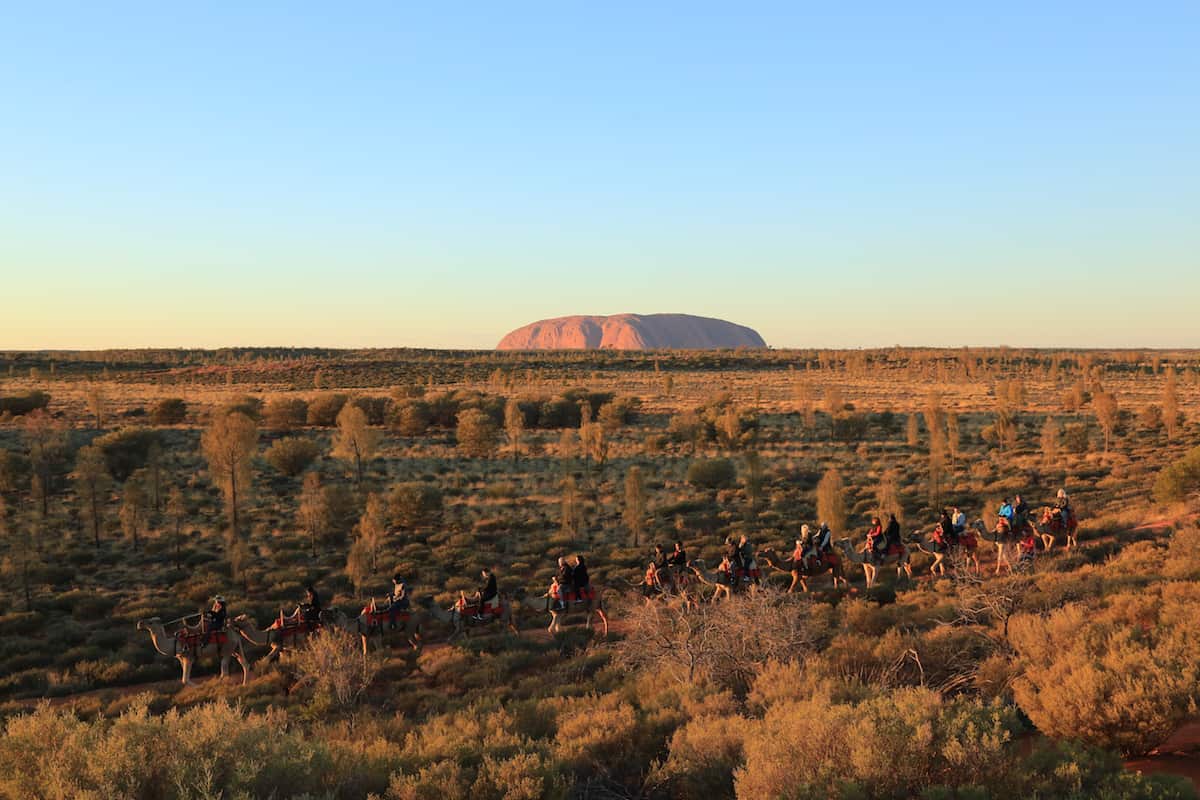
Along the way, our guides shared tidbits of information about the sacred sites and the Outback in general. How important these rocks are to the Aborigines. How they were formed. How old these camels are. What they eat. What they love. But I could not wrap my head around one thing. “Where did you get these camels?” asked one of my fellow would-be riders. Thank you, Mr.-Third-Rider-from-the-Back. I’d been wanting to ask that myself.
“From the wild,” our guide answered.
But it just spurred another curious question: Why in the world does Australia have a wild population of camels?
The First Camels in Australia
The very first camel in Australia was named Harry, who came to Austalia on 12 October 1840 aboard the SS Apolline all the way from Tenerife in the Canary Islands. He was the only surviving camel in the handful that were loaded into the ship. In 1846, Harry took part in a John Ainsworth Horrocks-led expedition for which he transported up to 160 kilograms of heavy load.
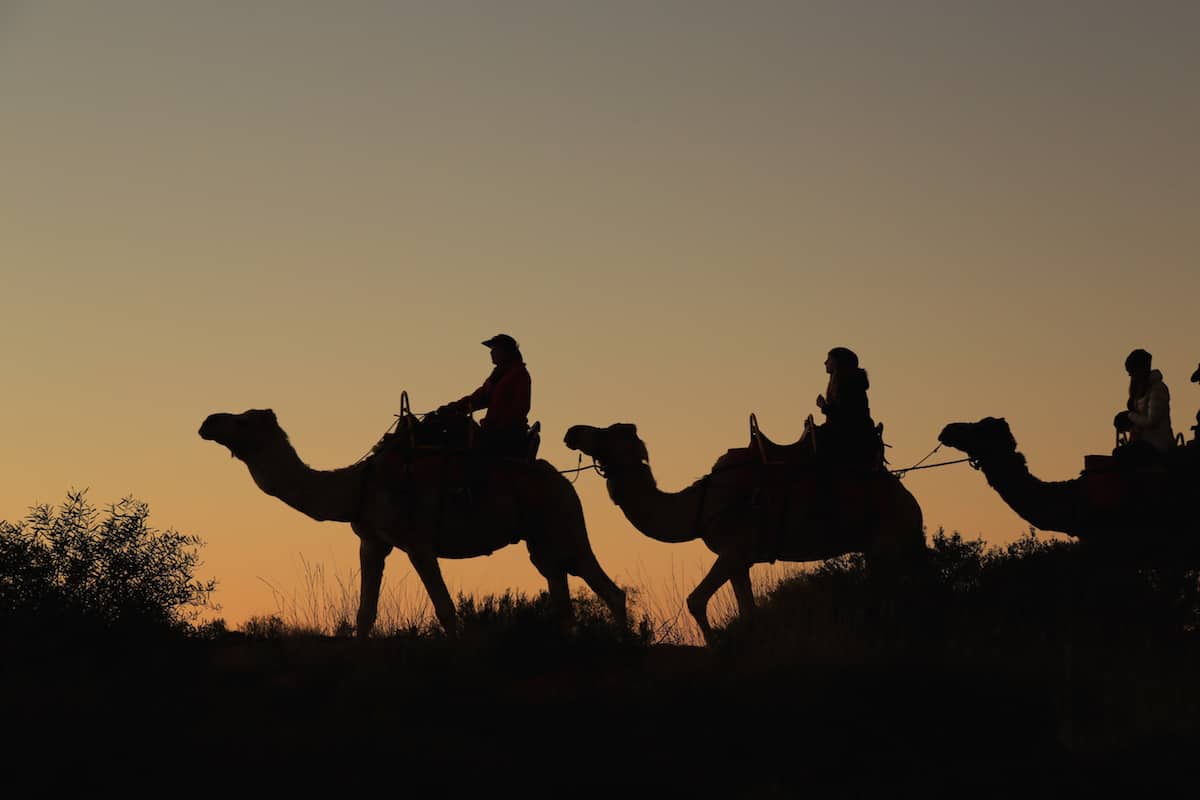
Since then, more and more camels had been imported over the years from the Arabian peninsula, Afghanistan, and India. From 1860 to 1900s alone, over 10,000 camels entered the continent. They proved to be brilliant in surviving the extremely harsh conditions in the Outback. Camels could last days without water and could easily endure temperatures that would normally kill humans and other animals. Much of Australia was unexplored by non-Aborigines at the time, and these camels played an important role in the European expeditions into the uncharted Australian territories.
Back into the Wild
The camel’s transformation from a helpful friend to a harmful pest began when the internal combustion engine was introduced in Australia. It wasn’t the camel’s fault — they were just being, you know, camels — but since they were no longer needed, thousands of them were released back into the wild. You know what happens when you introduce a foreign species: they shake up the ecosystem. They compete with other animals for resources, and there’s not much in the Outback. Water, for example, is scarce and one camel can drink gallons at one time. They also have no natural predators, allowing these tenacious guys to not just survive the Outback, they flourish.
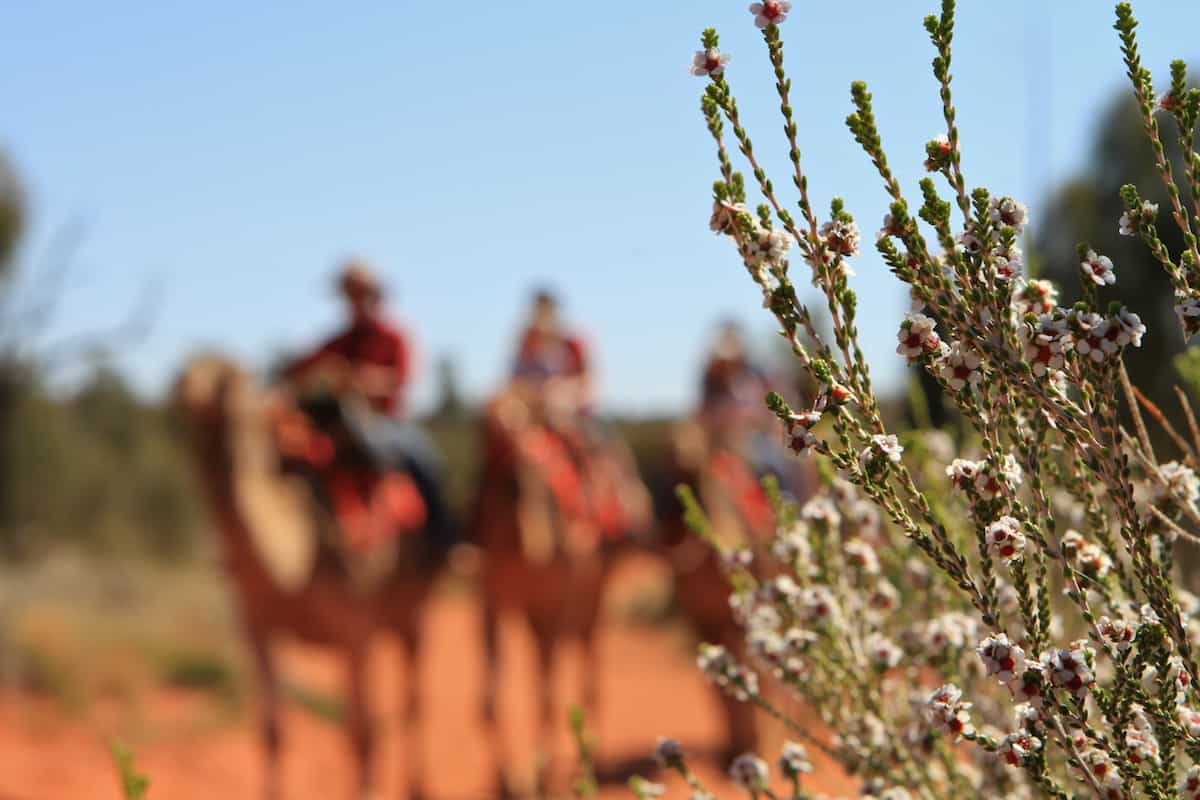
Most of the beasts working at Uluru Camel Tours, Australia’s largest camel farm, were captured in the wild and then later domesticated at the farm. It is now home to over 50 camels.
Before I knew it, an hour had already passed, and we were about to go full circle as we began to approach the saddlery. I looked back and found the sun a bit higher in the skies, leaving a pale pinkish glow over the red, flat world of the Outback. It was barely nine in the morning, but my day was already made.
Uluru Camel Tours
Operating Hours: 9am-3pm (April-October), 9am-1pm (November-March)
Farm Entrance Fee: FREE
Tour Cost: AUD 129 per person
Website: www.ulurucameltours.com.au
Where to stay: Ayers Rock YHA Resort offers affordable accommodations right at the heart of the outback, near Uluru and Kata Tjuta. Visit their official website at www.yha.com.au.
Photo by: Uluru Camel Tours
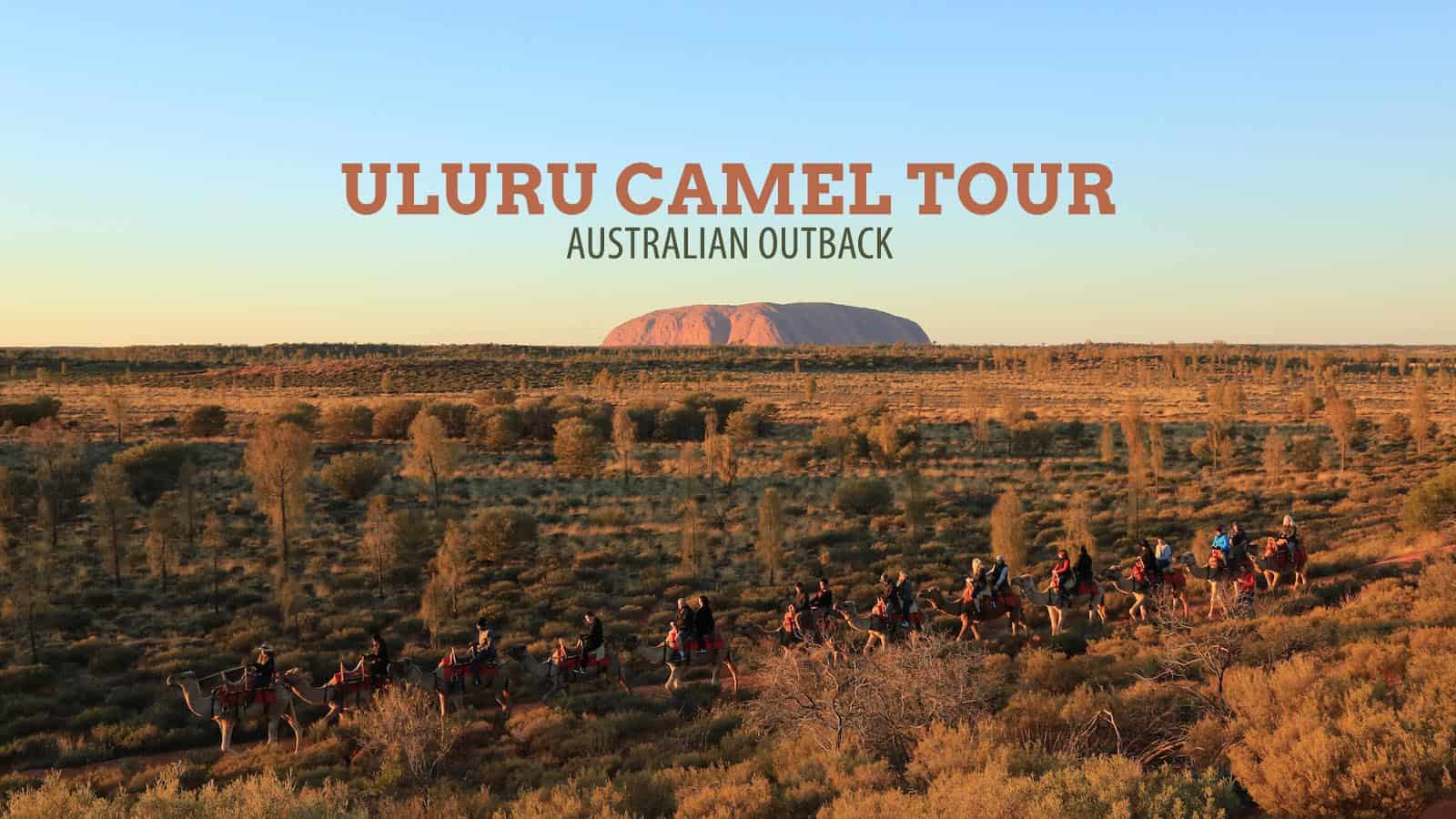
 Where to stay: Ayers Rock YHA Resort offers affordable accommodations right at the heart of the outback, near Uluru and Kata Tjuta. Visit their official website at
Where to stay: Ayers Rock YHA Resort offers affordable accommodations right at the heart of the outback, near Uluru and Kata Tjuta. Visit their official website at 